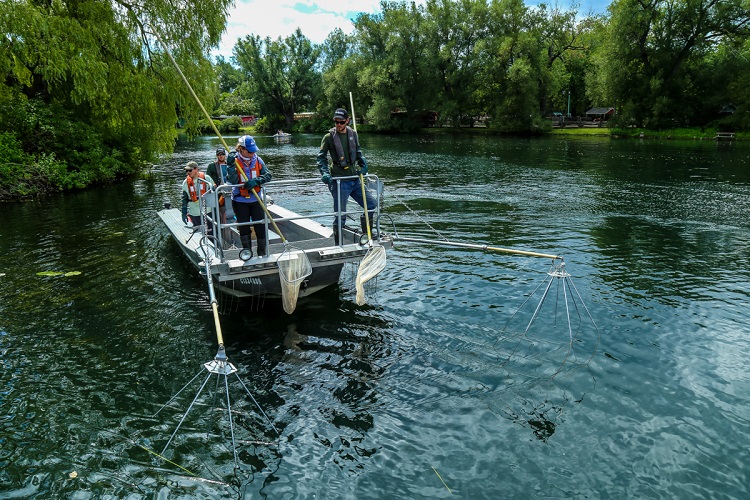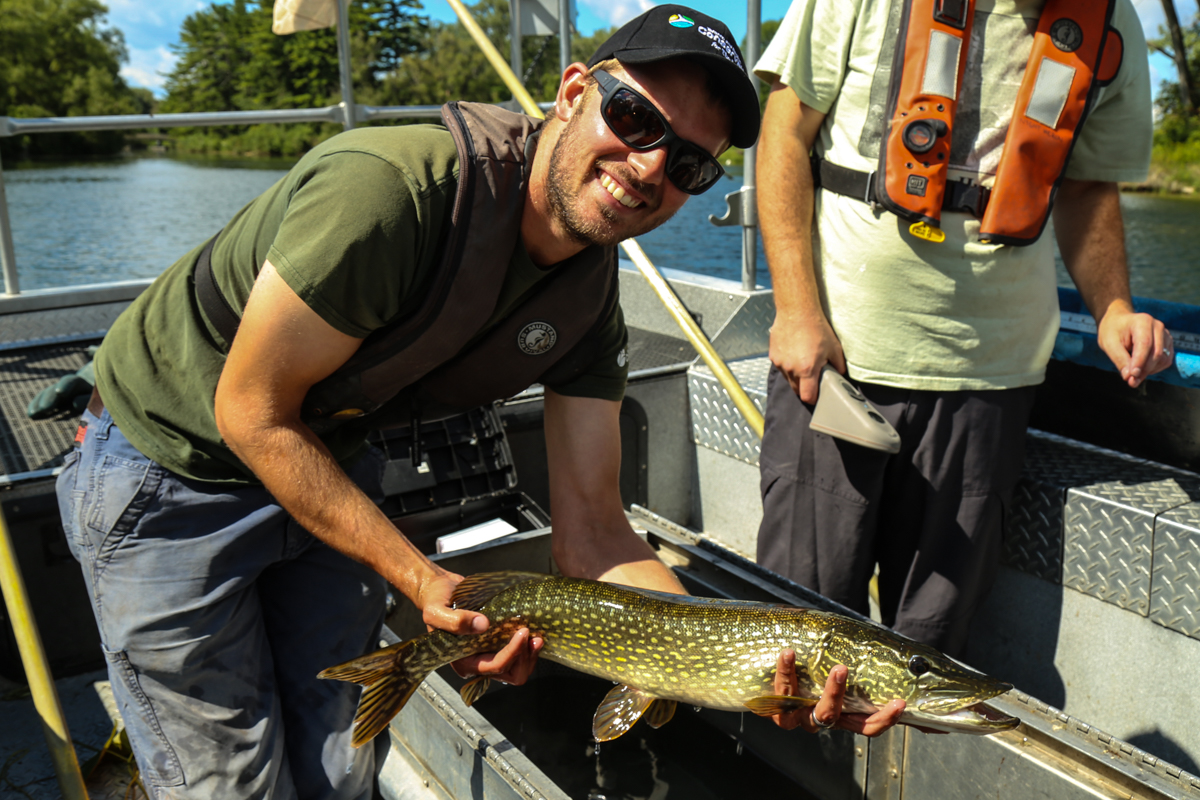Thanks to a ‘high-tech’ fish tagging study, resource managers are learning how fish are using restored habitats — part of an effort to enhance or expand restoration work in the Toronto Harbour.
In partnership with researchers from Carleton University and the Department of Fisheries and Oceans Canada (DFO), environmental monitoring crews from Toronto and Region Conservation Authority (TRCA) have tagged more than 300 native and non-native fish with acoustic transmitters since 2010 in an effort to track their feeding and spawning activities 24 hours a day year-round.

New Funding for Tagging Study!
2015 marks the fifth year the study has been underway. Researchers are in the process of outfitting 40 additional fish with transmitters thanks to new funding provided by Environment Canada’s Great Lakes Sustainability Fund, which will see the project continue for the next 3 years.
Future Plans
Understanding the mysteries of fish behavior, including where and how long fish are spawning and feeding throughout the seasons, will help TRCA continue to manage aquatic habitat along Toronto’s waterfront . The goal is to support a community of desirable native fish species as well as a self-sustaining fishery.

Future plans for the project include expanding the study area to pick up acoustic signals from tagged fish travelling along the north shore of Lake Ontario. This information will help to answer questions about how fish move regionally and how agencies can work together to improve the health of Lake Ontario.
For more project information please contact: Thomas Sciscione, Coordinator, Aquatic Habitat Toronto.
Did you know? A similar short article about this project was featured in the 2015 Summer Edition of Ontario Nature magazine.
Monitoring Matters! Through scientific data collection, TRCA’s Environmental Monitoring and Data Management team tell the stories about the changes affecting the natural areas and watercourses within our regions. For more information, please visit our website, follow us onTwitter, subscribe to our Monitoring Matters e-newsletter, or visit ourYouTube playlist.

